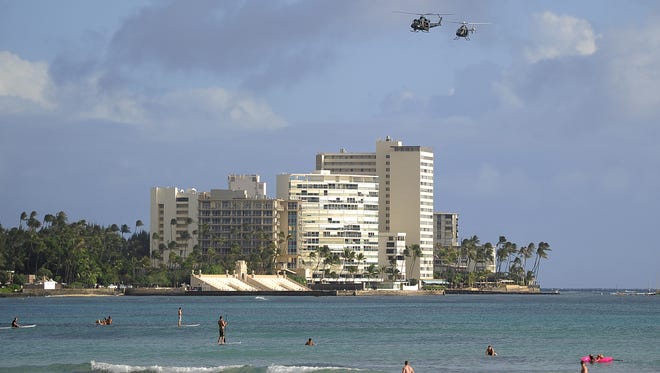Hawaii, eyeing North Korea, readies nuclear war sirens
 John Bacon
John Bacon
In a throwback to the days of the Cold War with Russia, Hawaii on Friday will begin testing a warning siren to prepare for the possibility of nuclear attack, state officials say.
Vern Miyagi, administrator for the state emergency management agency, said the sirens blasting across the islands would notify the public to "get inside, stay inside and stay tuned" for more information.
Miyagi likened the warnings to Bert the Turtle, a cartoon character from the 1950s used to warn Americans to "duck and cover" in the event of a nuclear attack. The increased threat from North Korea is the reason behind the warnings, he said.
"If anybody told me four or five months ago we would be doing this I would have said you are crazy," Miyagi said. "But stuff happens."
More:South Korea broadcasts defector's daring escape on loudspeakers
More:In the war of insults, here's North Korea's latest jab at Trump
The signal test will take place Friday and the first business day of each month after that. The test will take place in conjunction with a general siren warning, a more steady tone, that already takes place each month.
The state is also broadcasting public service announcements and conducting community meetings aimed at educating the public. Miyagi said Hawaiians should have two weeks of provisions stored in their homes, just in case of an attack or a natural disaster.
He acknowledged that state officials do not consider an attack likely but said all have heard the unrelenting threats from North Korean leader Kim Jong Un.
Kim and President Trump have swapped insults and threats since Trump assumed the presidency. Trump has threatened "fire and fury," and during a tour of Asia this month urged U.S. troops to be prepared for conflict.
“We dominate the sky, we dominate the sea, we dominate the land and space,” he said.
Kim has called Trump a "lunatic" and has threatened a pre-emptive strike aimed at annihilating the United States.
New York and Washington, D.C., are almost 7,000 miles from Pyongyang. Honolulu is about 4,600 miles. Closer quarters make Hawaii more vulnerable, but Miyagi dismissed the opinion of many Hawaiians that a nuclear attack would be so devastating that it's not worth planning for recovery.
"The models as far as casualties, we're talking about 10%," Miyagi said. "It's not pretty, (but) I'm going to tell the 90% survivors that we stopped planning because you guys were all supposed to die?
"There is an impact, and there is a whole bunch of stuff after," he said. "That is why we are preparing."
